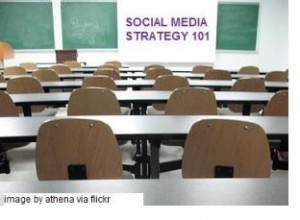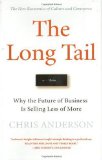Using Social Media to Drive Virtual Tradeshow Leads

I authored a guest post on “Using Social Media to Drive Virtual Tradeshow Leads” for It’s All Virtual, an influential blog exploring virtual events and environments. In my post, I highlight key strategies on how you can leverage social media:
1. Identify influencers
2. Engage in conversations
3. Advertise Socially
4. Share Freely
5. Measurement and Tracking
I conclude my post by stating:
One word of warning is to first research and evaluate before plunging in with a social media marketing program, especially when contacting individuals and bloggers or participating in online discussions. While social media marketing takes time and effort, when done well, the results can be spectacular!
What has worked for you?
Recent Twitter Update and Implications for Marketing
 September 1, 2010, Twitter sent an email to users regarding two new updates to its service. I found the update about moving to t.co URL wrapping intriguing, especially this sentence:
September 1, 2010, Twitter sent an email to users regarding two new updates to its service. I found the update about moving to t.co URL wrapping intriguing, especially this sentence:
When you click on these links from Twitter.com or a Twitter application, Twitter will log that click. We hope to use this data to provide better and more relevant content to you over time.
This signals more than providing protection against malicious content (which is important) and to provide better content for users. Rather, by “logging the click,” I see this as part of Twitter’s continued efforts to provide value-added services and data tracking for corporations:
1. Measurement and Analytics: The click-through rate will help with Twitter’s “Resonance” rating. While the resonance rating is part of Twitter’s Promoted Tweets campaign, there is value to provide companies – small, medium and large – access to this data, similar to a Google Analytics dashboard. Maybe Twitter can provide an entry-level offering with minimal information and then charge for for more analytics and optimization options.
2. Content Creation: One type of intelligence is understanding how your audience consumes and distributes the content. By analyzing these patterns, you can gain insight into the types of content that your audience is seeking. You can then develop a content strategy to reach and connect with your tareted audience segments.
3. Influencer Relations: By combining Twitter’s retweet information with the t.co click-through data, you can better identify influencers within your social graph. These would be individuals whose followers not only retweet content but also takes action via click-through information.
Conclusions
I’m curious to see what future developments will be introduced (or maybe acquired) by Twitter to enable individual and corporate brands to optimize their presence on Twitter. And whether or not these services are complimentary or competitive to companies like Radian6. What do you think? Anything I’m missing?
Meet Up at Upcoming Conferences
 I always look forward to meeting people at conferences. I plan to be attending these two upcoming conferences. Drop me an email if you’re interested in connecting.
I always look forward to meeting people at conferences. I plan to be attending these two upcoming conferences. Drop me an email if you’re interested in connecting.
WITI’s Women and Technology Summit, September 12-14, 2010 – San jose Doubletree Hotel – I will be attending on the 13th and 14th. The conference brings together top technology leaders to discuss strategy and growth.
SocialTech 2010, October 26, 2010, San Jose Doubletree Hotel – This conference looks like it will be a powerhouse of speakers discussing how to leverage social media for B2B.
Look forward to seeing you in San Jose.
Geolocation Services for B2B
With the introduction of Facebook Places, geolocation-based services are about to hit the mainstream. Rather than focus on the news or consumer uses, I want to look at the potential of such services for business-to-business customer marketing.
MarketingSherpa recently wrote about an iPhone app developed by Morrison & Foerster LLP (subscription required shortly). This app allows you to browse bios, get directions to a local office, get news and even play a game. I suspect that one of the main objectives for the company’s “MoFo2Go” is to increase customer loyalty and referrals.
Now imagine if you take this type of app to the next level, enabling customers and employees to proactively share their geographic locations with one another. You’ve created a mobile community where customers and prospects can search, find and connect with others located near them.
And if they are able to preview information, such as company title or industry, they can reach out to your subject matter experts to resolve an issue or get feedback on the company and products. Almost anytime, anywhere.
The potential benefits of such services are:
1. Customer retention: Provides an alternative channel for customers to resolve issues, leading to happier customers
2. Customer referrals: With happy customers, they will be open to sharing the app to their colleagues and industry peers
3. Customer engagement: With the potential for real-time feedback and support, you are increasing engagement not only with your company brand but also with evangelists within your company
Conclusions
While the potential for geolocation-based services is just being uncovered, I anticipate that early adopters like Morrison & Foerster will demonstrate that the risk is worth it to increase customer retention, loyalty and ultimately engagement.
What other ways can geolocation be used?
Rebuilding a Personal Brand is Hard Work
 At the beginning of last year, my personal brand was just beginning to take off. I had written a couple of posts, such as this one, that generated a lot of attention. I was even asked to be a guest on the Media Bullseye podcast and to write a byline for Dan Schwabel’s Personal Branding Magazine.
At the beginning of last year, my personal brand was just beginning to take off. I had written a couple of posts, such as this one, that generated a lot of attention. I was even asked to be a guest on the Media Bullseye podcast and to write a byline for Dan Schwabel’s Personal Branding Magazine.
Just as the momentum was gaining speed, I put on the brakes, pouring my time and energy into my work. My personal brand became more intertwined with the work I did on behalf of my company vs my original intent of providing thoughts on how public relations and marketing come together.
As I take a step back, here are some lessons learned as I rebuild my personal brand:
1. Engage online: My goal is to participate in at least one online conversation each day, excluding weekends. This will drive me to comment on relevant blogs, share my knowledge via LinkedIn answers or meet new people via Twitter.
2. Write on my blog: The writing on my blog has been quite irregular over the past year and a half. My goal is to write at least one post a day. By sharing my thoughts, I hope to engage with existing readers and further expand my online network of friends.
3. Balance work with personal: This is a biggie. I have to do a better job of balancing my work “brand” with that of my personal one. While part of my job is to build awareness for any company I’m working with, I have to consciously participate as part of my personal brand too. In turn, this will help any company by building credibility in my personal brand.
Conclusions
In the end, it’s easier to build and maintain a personal brand than to rebuild one. In the former, you’re delivering a consistent experience and expectation. Once you discontinue that, it’s difficult to regain that type of momentum – and in a way – trust with your audience. So, what do you think? Did my personal brand diminish over the past few months or only get better like fine wine? And what tips do you have for building and maintaining your personal brand?
Guest Post – Go Virtual for your Next Press Event
 I asked my former colleague, Dennis Shiao, to share his insights on how virtual events can augment PR and marketing. Briefly, Dennis is an evangelist, strategist and practitioner of virtual events. Dennis provides strategic consulting to clients on their virtual events and has managed virtual event campaigns for Cisco, HP, Oracle and Microsoft, among others. Dennis blogs about virtual events and virtual worlds at “It’s All Virtual” and is a frequent author and speaker. Dennis can be found on Twitter at @dshiao.
I asked my former colleague, Dennis Shiao, to share his insights on how virtual events can augment PR and marketing. Briefly, Dennis is an evangelist, strategist and practitioner of virtual events. Dennis provides strategic consulting to clients on their virtual events and has managed virtual event campaigns for Cisco, HP, Oracle and Microsoft, among others. Dennis blogs about virtual events and virtual worlds at “It’s All Virtual” and is a frequent author and speaker. Dennis can be found on Twitter at @dshiao.
Virtual events are seeing strong adoption. It all started with the virtual trade show, a 2.5D representation of a physical trade show, complete with a lobby, auditorium, exhibit hall, networking lounge and more. A number of formats soon followed, including the virtual career fair, virtual sales meeting, virtual product launch and virtual partner summit. In addition, we’re now seeing businesses leverage virtual platforms for “corporate university” or e-Learning.
It will be exciting to see the new and innovative formats that marketers, publishers, event managers and business owners develop in 2010 and beyond. I have a format that is well suited for virtual: the press event.
In many ways, the benefits of a virtual press event are the same as a virtual trade show. The host, along with attendees, presenters, etc. participate via the web and save on travel costs, lodging costs, shipping costs and “out of office time.” In addition, all activities within the environment are tracked. And, the environment can remain available long after the live “event” concludes.
Additional benefits of producing your press event virtually:
Global Reach
In the past, press events were planned in “road show” fashion, in which you visited major cities that had the highest concentration of your target media publications. With virtual, you can host a single event and capture a global audience. Alternatively, you can leverage a single virtual platform and stage live events based on regional timezones, to target business hours in North America, then EMEA, then Asia Pac. Your PR efforts can now have a wider reach at a lower cost.
Convenient Access to Your Executives
In a physical setting, it can be a logistical challenge to schedule and coordinate access from press members to your executive team. With virtual, executives can interact with larger audiences more efficiently. For instance, you might place your CMO in a moderated chat room and take questions from an audience of 1,500. Imagine doing that in a physical setting!
Invite Customers and Prospects
Increase your ROI by also inviting customers and prospects to the event. Do your require press credentials to gain access to certain materials? No problem. Virtual event platforms provide role-based access, which means that an access profile can be applied to your customers and prospects that are different from press members. Any PR that you do affects your customers, too, so include them when sharing the news.
Use Activity Paths to Follow Up Appropriately
Whether customer, prospect or press member, study activity paths in the virtual event to determine effective follow-up plans. Did a reporter visit your booth ten times, then ask numerous questions in the group chat area? Schedule a one-on-one conference call with your Senior Product Manager, to ensure that the reporter has all the info she needs. Similarly, follow up with prospects to move them further along in the sales cycle.
Conclusion
I believe virtual events can be the definition of “PR meets Marketing”. As PR and Marketing look to Web 2.0 to broaden reach and engagement, consider virtual events as one more tool in your arsenal.
Interested in being a guest author? Send me an email with your proposed topic and how it relates to PR Meets Marketing. Self-promotional content will not be considered.
Social Media Strategy 101: Setting Expectations
 In a recent report by Jeremiah Owyang of The Altimeter Group, The 8 Success Criteria for Facebook Marketing, the group highlighted the need to set community expectations as a key component for success in Facebook marketing. I think this is not just for Facebook but something to consider as part of your social media strategy. Furthermore, this extends beyond your external audience but also should be shared with employees and supported by your executives.
In a recent report by Jeremiah Owyang of The Altimeter Group, The 8 Success Criteria for Facebook Marketing, the group highlighted the need to set community expectations as a key component for success in Facebook marketing. I think this is not just for Facebook but something to consider as part of your social media strategy. Furthermore, this extends beyond your external audience but also should be shared with employees and supported by your executives.
Here are key elements to consider to set the proper expectations:
1. Engagement: Be clear on how often you plan to engage via your social media outlets , as well as the guidelines for participation and behavior. In addition to incorporating the policy into your social media strategy, consider placing this on your corporate website to ensure consistency and refer back to it when appropriate.
2. Transparency: While people will engage with a brand, I strongly believe that putting a name and face to the company strengthens the connection with audiences and humanizes the company as a result. Incorporate a page that provides at least a bio and photo of contributors.
3. Purpose: Provide a clear sense of why you’re engaging people with social media. Is this to get feedback from consumers, to sell something or for customer support? Not only will this minimize confusion with external audiences, but also help internal employees understand what they can reveal publicly.
4. Consistency: Once you set the expectations deliver on this consistently.
Are there other factors I missed? Let me know in the comments, and I’ve also embedded the full version of the Facebook Marketing Report below for your reference.
Social Media Marketing 101
1. Social Media Strategy 101: Are You Ready?
2. Social Media Strategy 101: Definitions
3. Social Media Strategy 101: Which Persona Helps Tell Your Story?
About
Favorite Service
Recent Comments
- on Going Virtual Isn’t Necessarily the Answer to Replacing Your Physical Events
- on Going Virtual Isn’t Necessarily the Answer to Replacing Your Physical Events
- on Going Virtual Isn’t Necessarily the Answer to Replacing Your Physical Events
- on Going Virtual Isn’t Necessarily the Answer to Replacing Your Physical Events
- on Going Virtual Isn’t Necessarily the Answer to Replacing Your Physical Events
Ads by Google
Favorite Books
Marketing Blogs
PR Blogs
- KD Paine's Measurement Blog
- Micro Persuasion
Virtual Events & Meetings Blogs
- Cisco Virtual Environments
- It's All Virtual
- The Webinar Blog
- Virtual Edge Institute

 Follow
Follow Cece Salomon-Lee is director of product marketing for Lanyon Solutions, Inc. and author of PR Meets Marketing, which explores the intersection of public relations, marketing, and social media.
Cece Salomon-Lee is director of product marketing for Lanyon Solutions, Inc. and author of PR Meets Marketing, which explores the intersection of public relations, marketing, and social media. 


